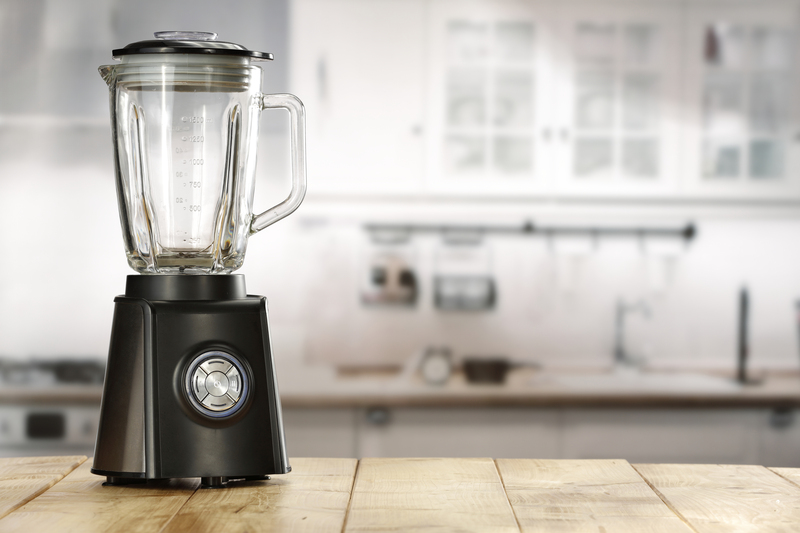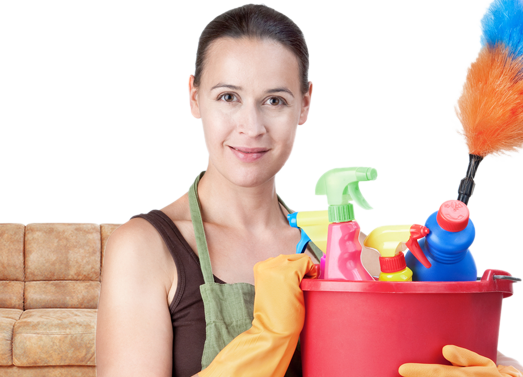Indoor Air Quality: A Vital Factor for Homes and Workplaces
Posted on 03/09/2025
Indoor Air Quality: A Vital Factor for Homes and Workplaces
Indoor air quality (IAQ) is an essential aspect of our everyday lives that often goes unnoticed. Whether at home, in the office, or any indoor environment, the air we breathe directly affects our health, productivity, and overall well-being. With people spending up to 90% of their time indoors, understanding and improving air quality indoors is more important than ever. In this comprehensive guide, we'll explore why IAQ matters, its health effects, how to measure it, and proven strategies to keep indoor air fresh and clean.
What is Indoor Air Quality (IAQ)?
Indoor air quality refers to the state of the air inside buildings and structures, as it relates to the health and comfort of building occupants. Indoor environments can harbor a mix of pollutants, allergens, and contaminants that may not only compromise comfort but also lead to significant health risks. IAQ is influenced by a variety of factors, including ventilation, humidity, chemical exposures, and outdoor air exchanges.
Key Components That Influence Indoor Air Quality
- Ventilation--Adequate fresh air exchange dilutes pollutants and maintains oxygen levels.
- Humidity--Keeping humidity between 30%-50% helps prevent mold and dust mites.
- Pollutant Sources--Building materials, cleaning agents, hobby supplies, and fuel-burning appliances all contribute to indoor air pollution.
- Building Design--Construction materials, insulation, and furnishings can either emit pollutants or support healthier IAQ.
- Maintenance--Proper upkeep of HVAC systems and prompt response to leaks, spills, or mold is crucial.

Why Indoor Air Quality is Critical for Homes and Workplaces
Many people assume that being indoors shields them from pollution, but indoor air often contains higher levels of contaminants than outdoor air. Poor indoor air quality is recognized as a major environmental health risk by organizations such as the World Health Organization (WHO) and the Environmental Protection Agency (EPA).
Health Impacts of Poor Indoor Air Quality
- Respiratory Issues--Exposure to dust, mold, and volatile organic compounds (VOCs) can trigger asthma, allergies, and chronic cough.
- Headaches and Fatigue--Inadequate ventilation and chemical exposure contribute to sick building syndrome, causing headaches, dizziness, and fatigue.
- Long-Term Diseases--Prolonged exposure to certain pollutants (like radon, asbestos, and tobacco smoke) increases the risk of heart disease, cancer, and neurological problems.
- Irritation of Eyes, Nose, and Throat
- Reduced Immune Function
Children, the elderly, and individuals with pre-existing health conditions are particularly vulnerable to poor indoor air. In the workplace, low air quality doesn't just affect health--it also undermines productivity, increases sick days, and can diminish overall job satisfaction.
Common Sources of Indoor Air Pollution
- Combustion Byproducts (from stoves, fireplaces, candles, and tobacco smoke)
- Household Cleaners and Chemicals (emitting VOCs and other toxins)
- Biological Contaminants (mold, mildew, bacteria, viruses, dust mites, pet dander)
- Building Materials (asbestos, formaldehyde from pressed wood products, old paint containing lead)
- Outdoor Pollutants Entering Indoors (vehicle emissions, pollen)
How to Measure and Assess Indoor Air Quality
Being proactive with indoor air quality evaluation can help you catch issues before they develop into health hazards. There are tools and tests that enable homeowners and facility managers to monitor and improve air quality indoors.
Essential IAQ Indicators to Monitor
- Particulate Matter (PM2.5 & PM10)--Tiny airborne particles from dust, pollen, and combustion that can penetrate deep into the lungs.
- Volatile Organic Compounds (VOCs)--Chemical gases released by cleaning products, paints, and furniture.
- Carbon Monoxide (CO)--Colorless, odorless gas produced by incomplete combustion.
- Carbon Dioxide (CO2)--A marker for ventilation efficiency: high levels cause drowsiness and reduced cognitive function.
- Formaldehyde
- Radon--A natural radioactive gas linked to lung cancer, especially in basements.
- Mold Spores and Bacteria
- Humidity Levels
Tools for Monitoring Indoor Air Quality
- Home IAQ Monitors--Smart devices track real-time air quality data and send alerts via smartphone apps.
- Professional Assessments--IAQ specialists can evaluate air and surface contamination, check HVAC systems, and identify hidden issues like mold growth.
- DIY Test Kits--Available for specific concerns like radon, formaldehyde, or mold spores.
Regular monitoring provides actionable data, supports decision making when planning improvements, and offers peace of mind for families and workers alike.
Improving and Maintaining Healthy Indoor Air Quality
There are several strategies to ensure indoor environments remain healthy, safe, and comfortable for all occupants. Proactive maintenance, cleaning habits, and technology are key to controlling pollutants and ensuring optimal IAQ.
1. Enhance Ventilation
- Open windows and doors when weather and security permit, to allow for natural fresh air exchange.
- Use exhaust fans in kitchens, bathrooms, and laundry areas to remove moisture and odors.
- Maintain mechanical ventilation systems (like HRVs or ERVs) for consistent airflow.
- Service HVAC systems regularly and replace air filters as recommended.
2. Control and Eliminate Pollutant Sources
- Switch to low-VOC or fragrance-free products in cleaning supplies, paints, and furnishings.
- Avoid smoking indoors.
- Store chemicals and solvents in sealed containers, away from common living areas.
- Address water leaks promptly to prevent mold and mildew growth.
- Replace old carpets and pressed wood materials that may off-gas harmful chemicals.
3. Manage Humidity Levels
- Use dehumidifiers or air conditioners in damp climates or during humid seasons.
- Keep humidity between 30% and 50% to deter dust mites and mold.
- Vent dryers to the outdoors and fix plumbing leaks right away.
4. Air Cleaning and Filtration
- Install HEPA air purifiers to trap fine particles, allergens, and some microbes.
- Use activated carbon filters for chemical and odor adsorption.
- Regularly clean ducts, vents, and air filters in the HVAC system.
5. Address Biological Contaminants
- Vacuum frequently with HEPA-filtered models to reduce dust, pet dander, and pollen.
- Wash bedding and soft furnishings in hot water to eliminate dust mites.
- Promptly remove mold-affected materials and clean with appropriate disinfectants.
- Control indoor plants--while some purify air, overwatering may promote mold.
The Role of Technology in Maintaining Indoor Air Quality
Modern technology offers innovative solutions to monitor, manage, and even automate indoor air quality improvements. Smart IAQ devices and systems are transforming how homeowners and businesses ensure optimal environments.
Smart IAQ Solutions
- Real-Time Air Quality Monitors--Track pollutant levels, temperature, and humidity; send instant alerts for poor air events.
- Wi-Fi Enabled Purifiers and HVAC Controls--Remotely adjust fan speeds, filtration modes, and settings for air handling units.
- Integration with Smart Home Ecosystems--Coordinate with thermostats, humidifiers, and voice assistants for seamless air quality management.
- Automatic Response Systems--Automatically trigger ventilation or purification if pollutant levels spike.
These systems make it easier than ever to maintain indoor air quality at optimal levels with minimal manual intervention.
Government Guidelines and Standards for Indoor Air Quality
Several health organizations and agencies have established indoor air quality standards and recommendations that guide what constitutes safe levels for various pollutants. Understanding these can help occupants and building managers strive for best practices.
Key IAQ Guidelines and Agencies
- Environmental Protection Agency (EPA)
- Guidance on indoor pollutants, radon, mold remediation, and safe cleaning practices.
- World Health Organization (WHO)
- Air quality guidelines for pollutants such as PM2.5, PM10, and VOCs.
- American Society of Heating, Refrigerating, and Air-Conditioning Engineers (ASHRAE)
- Ventilation standards for different building types.
- Occupational Safety and Health Administration (OSHA)
- Workplace air quality minimum standards.
While regulations may differ by country, these agencies offer valuable resources and recommendations for improving air quality indoors and ensuring a healthy environment at home and at work.

Frequently Asked Questions About Indoor Air Quality
How can I tell if my indoor air is unhealthy?
Common symptoms include headaches, allergy flare-ups, persistent cough, musty odors, or visible mold. However, many pollutants are invisible and odorless--which is why IAQ monitors and professional assessments are crucial.
Are air purifiers necessary for every home?
If your home has allergy sufferers, pets, or is located near traffic or industry, air purifiers with HEPA and carbon filters can greatly improve comfort. However, air cleaning devices should complement--not replace--good ventilation and source control.
How often should I check my home's indoor air quality?
Regular monitoring is recommended, especially after renovation, noticeable odor/moisture issues, or when introducing new furnishings or chemicals. Seasonal checks are also advised for managing humidity and allergens.
Conclusion: Prioritizing Indoor Air Quality for Health and Productivity
Indoor air quality is more than just a comfort factor--it is integral to our health and quality of life. Whether you are at home with your family or working in a busy office, breathing clean air supports clearer thinking, better sleep, fewer illnesses, and a happier, more productive environment. By understanding the importance of IAQ, identifying problem sources, and employing effective strategies and technologies, you can ensure that your indoor spaces are safe, healthy, and welcoming for everyone.
If you have concerns about your home or office air, don't wait--take the first step toward better indoor air quality today. A few proactive changes can yield significant benefits for everyone who walks through your door.




